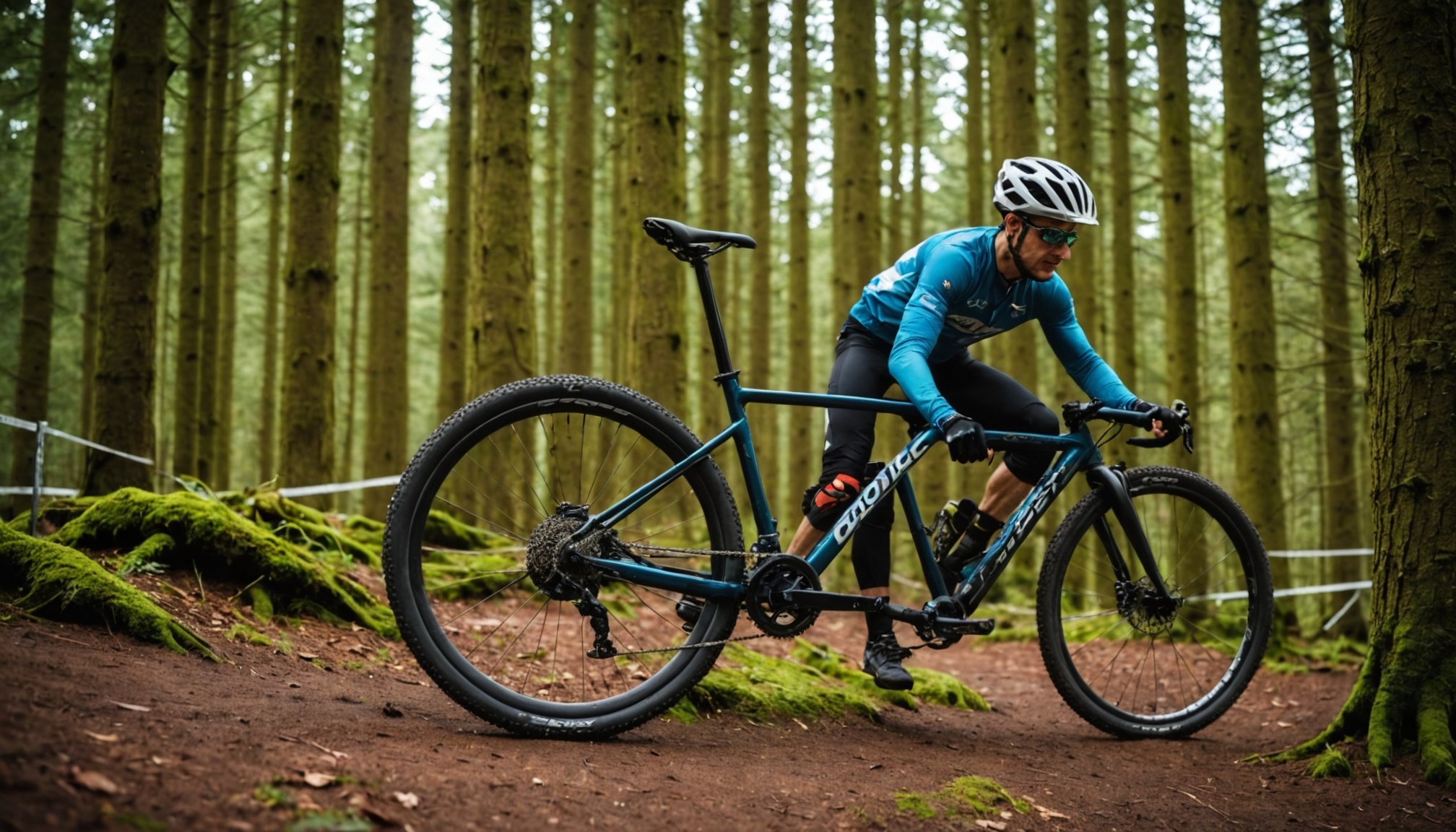Understanding the Bicycle Market in the UK
The UK bicycle market is experiencing significant shifts, influenced by evolving consumer preferences and demographic changes. Currently, the market landscape is marked by a growing interest in environmentally friendly transportation options, which positions bicycles as a popular choice among consumers. There’s also a noticeable trend towards electric bicycles, with their convenience and ease appealing to both urban commuters and recreational riders.
Key demographics shaping the market include young professionals and environmentally conscious individuals. These groups are particularly interested in sustainable modes of transport. Families are also investing in bicycles, driven by a desire for healthier lifestyles and quality family time. This demographic diversity necessitates a tailored approach to purchasing decisions, where brands must align their offerings to meet varying consumer needs.
Topic to read : Harnessing TikTok: Innovative Tactics for UK Fitness Experts to Elevate Workouts and Attract Clients
Competition among leading bicycle brands in the UK is intense. Companies like Trek, Specialized, and Giant dominate the landscape, driven by innovative designs and strong brand identities. These brands effectively leverage their reputations and market presence to capture significant portions of the market share. To stay competitive, it’s crucial for newcomers to offer unique value propositions and embrace emerging trends, such as sustainability and technological advancements in bicycle design.
Developing a Brand Strategy for Bicycle Manufacturers
In the competitive landscape of the bicycle industry, developing a robust brand strategy is paramount. A strong brand identity not only distinguishes manufacturers but also fosters loyalty among consumers. For instance, brands like Trek and Specialized have thrived by aligning their identity with innovation and performance, values that resonate well within the cycling community.
This might interest you : Boosting Craft Beer Loyalty: Cutting-Edge Email Marketing Tactics for UK Brands
A unique value proposition and clear messaging serve as the cornerstone of brand strategy. Crafting a value proposition means articulating what sets a brand apart, whether it’s through durable design, cutting-edge technology, or exceptional customer service. This differentiation must communicate the benefits that appeal directly to customers’ aspirations and needs.
Furthermore, aligning brand strategy with customer expectations and market needs ensures relevance. This involves continuously monitoring consumer trends and adapting offerings accordingly. Brands must understand that the modern cyclist values sustainability and technological advancement. Thus, incorporating these attributes into a brand strategy can significantly enhance market positioning.
Effectively implementing these components can ensure that bicycle manufacturers maintain a competitive edge in the market, appealing to both loyalists and new enthusiasts. Building a coherent and distinctive brand essence ultimately empowers manufacturers to navigate the evolving dynamics of the UK bicycle market proficiently.
Content Marketing Types for Bicycle Brands
Bridging the gap between consumers and brand identity relies heavily on effective content marketing for bicycles. Diverse methods cater to various audience segments, enhancing engagement and brand recall.
Blogs and Articles
Creating engaging blog content that resonates with cyclists serves as a vital medium for content marketing for bicycles. Informative articles on bicycle maintenance, cycling routes, or health benefits can position a brand as an authority, fostering trust and loyalty among readers.
Video Content
Leveraging video content is essential in illustrating a brand’s innovations. Tutorials demonstrating product features, assembly guides, or user testimonials can increase consumer confidence. Videos effectively showcase the practicality and appeal of a bicycle brand, often influencing purchasing decisions.
Social Media Campaigns
Utilising platforms like Instagram and Facebook enables brands to build community engagement. Effective social media campaigns use visually appealing content, hashtags, and interactive elements such as polls or contests to capture audience interest. Engaging with users through comments and direct messages further strengthens brand-consumer relationships.
Embracing these content types allows brands to reach their target consumers successfully. Adopting an integrated approach ensures that a brand remains top-of-mind while navigating the competitive landscape of the bicycle market.
Target Audience Analysis for Effective Marketing
Understanding the bicycle target audience is crucial for tailoring effective marketing strategies. To ensure success, it’s essential to identify and segment key audience groups within the UK bicycle market. Segmentation allows brands to cater to specific habits and preferences, thus improving consumer engagement.
Young professionals and environmentally conscious individuals are prominent segments drawn to sustainable transport options provided by bicycles. Effective marketing strategies should aim to connect these audiences to products incorporating eco-friendly materials or innovative commuting solutions. Crafting campaigns that address common urban commuting challenges can resonate well.
Families, motivated by the pursuit of healthier lifestyles and engaging activities, form another significant audience. Marketing efforts should highlight bicycles’ benefits for family bonding and fitness, such as durable models designed for various age groups and cycling skill levels.
To maximize engagement, it’s vital to understand customer pain points, such as maintenance challenges or storage limitations, and preferences, like design and functionality. Addressing these factors in content and product offerings heightens relevance.
Successful content marketing for bicycles hinges on delivering messages tailored to these distinct user groups. Brands that adapt their offerings to address these insights can significantly enhance their market positioning and foster stronger consumer loyalty.
Examples of Successful Content Marketing Campaigns
Exploring successful bicycle marketing campaigns can offer insightful lessons and strategies for other brands in the industry. These campaigns serve as valuable case studies, demonstrating how innovative content strategies can drive both brand growth and engagement.
One exemplary case is the campaign by Brompton Bicycles in the UK. By using lifestyle-focused imagery and storytelling that resonated with urban commuters, Brompton effectively showcased their unique folding bikes. Their content marketing for bicycles utilized social media platforms and interactive blog posts to engage users, successfully highlighting the practicality and style of their products. This approach significantly enhanced brand visibility and attracted a dedicated following.
Another noteworthy campaign was executed by Evans Cycles. They leveraged interactive challenges and community-driven content to create buzz and foster engagement amongst cycling enthusiasts. By combining user-generated content with informative video tutorials, Evans Cycles provided an engaging experience that also offered significant value to their audience.
These campaigns illustrate that crafting engaging and relatable narratives is key to effective content marketing. By fostering an emotional connection, brands can not only drive immediate engagement but also build long-term loyalty and advocacy. Such insights highlight the power of well-executed content marketing in the competitive UK bicycle market.
Metrics for Measuring Content Marketing Success
To gauge the effectiveness of content marketing strategies in the bicycle industry, establishing key performance indicators (KPIs) is crucial. These metrics provide insights into how well a brand’s content resonates with its audience and drives growth.
Engagement rates are fundamental in assessing content appeal. This includes measuring likes, shares, and comments on social media and tracking time spent on blog pages. Higher engagement signals that content captures and maintains audience interest, which is critical for content marketing success.
Conversion rates are another vital metric, indicating how effectively content contributes to achieving business objectives. This could involve tracking the number of website visitors who sign up for newsletters or make a purchase after engaging with content. A higher conversion rate points to content that not only engages but also persuades.
Employing analytics tools like Google Analytics can refine content strategies by offering detailed insights into audience demographics and behaviour. These tools help in identifying which content types generate the most interest and which need improvement. Through consistent monitoring and analysis, brands can adapt their strategies to better meet customer expectations and enhance digital presence effectively in the UK’s competitive bicycle market.
Leveraging Social Media and SEO for Brand Growth
In the ever-evolving landscape of the bicycle industry, harnessing the power of social media SEO is pivotal for bicycle brands seeking to enhance visibility and drive growth. By optimizing social media profiles with relevant keywords, brands can improve discoverability, ensuring they appear prominently in potential customers’ searches.
Integrating SEO strategies into content creation is equally vital. This approach involves crafting content that not only resonates with the audience but also aligns with search engine algorithms. Techniques such as keyword optimization, meta descriptions, and alt text help ensure that a brand’s content reaches its intended audience more effectively.
Moreover, building partnerships and collaborations can significantly expand a brand’s reach within the cycling community. By engaging with influencers and complementary businesses, bicycle brands can tap into new segments and cultivate a broader audience base. These partnerships often provide mutual benefits, enhancing brand credibility and engagement.
Implementing these strategies enables brands to maintain a robust presence online, connecting with more consumers and reinforcing market positioning. Effectively leveraging social media and SEO not only strengthens brand visibility but also fosters lasting connections with the bicycle community. This integrated approach is essential for sustainable growth in the competitive UK bicycle market.











